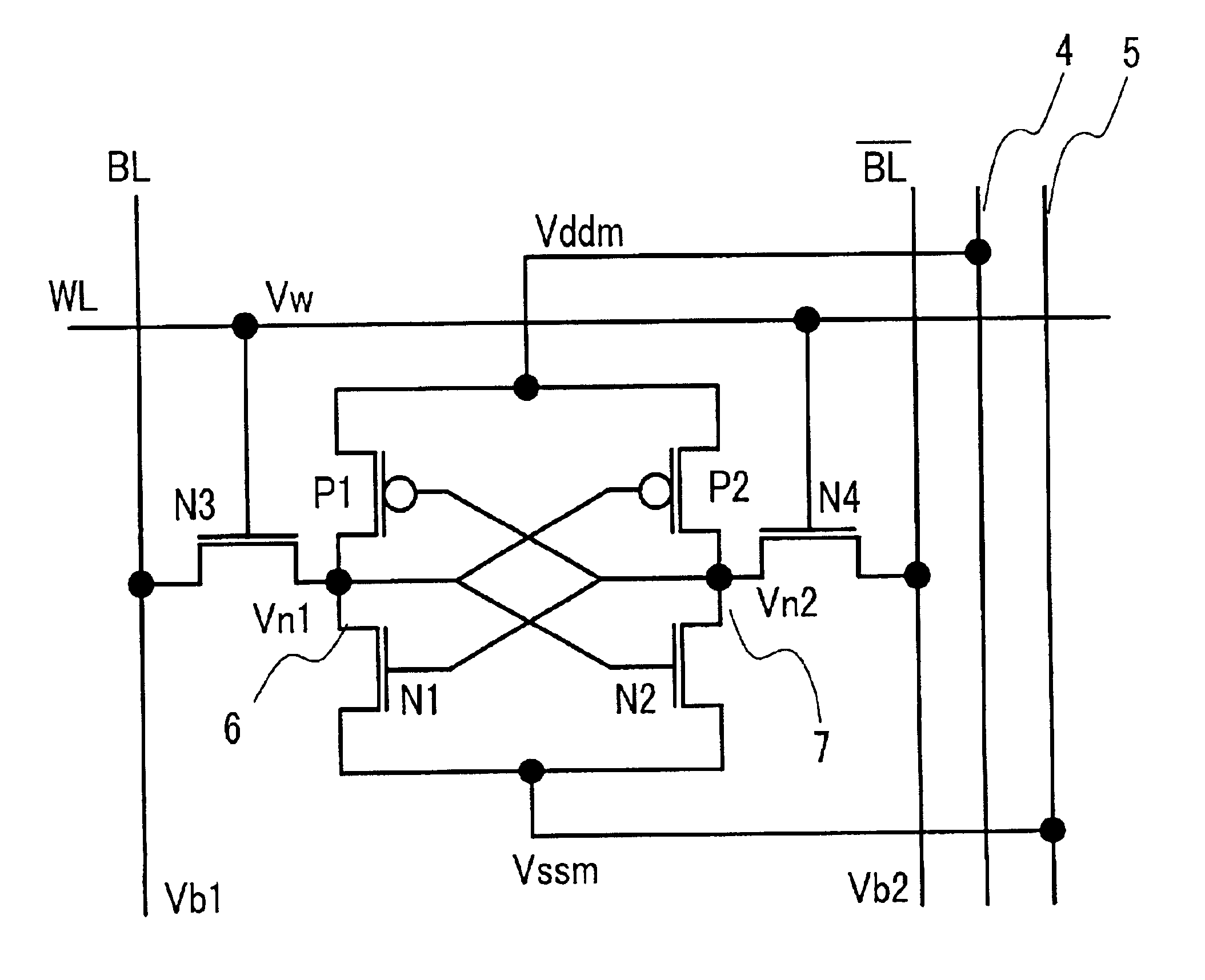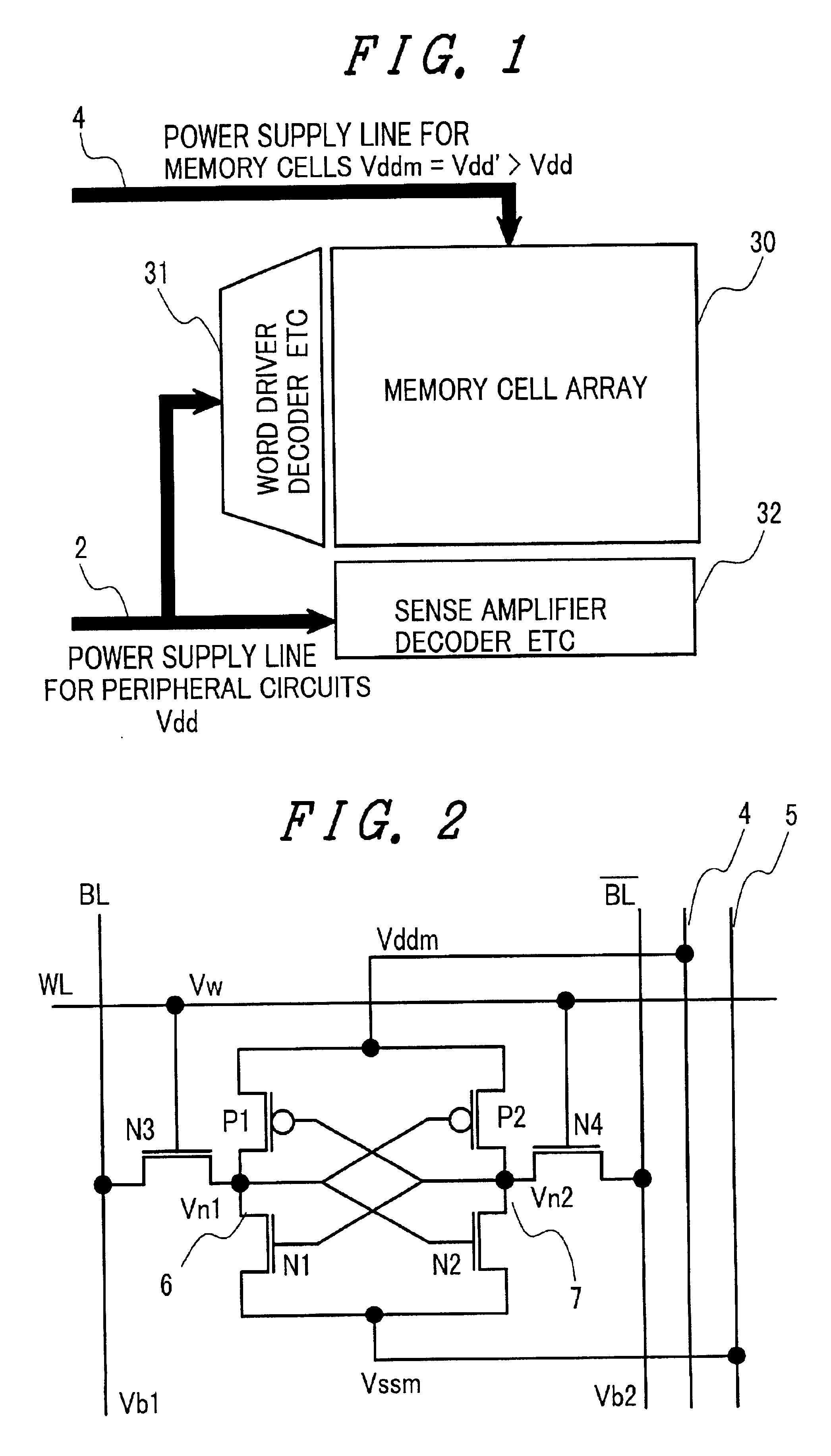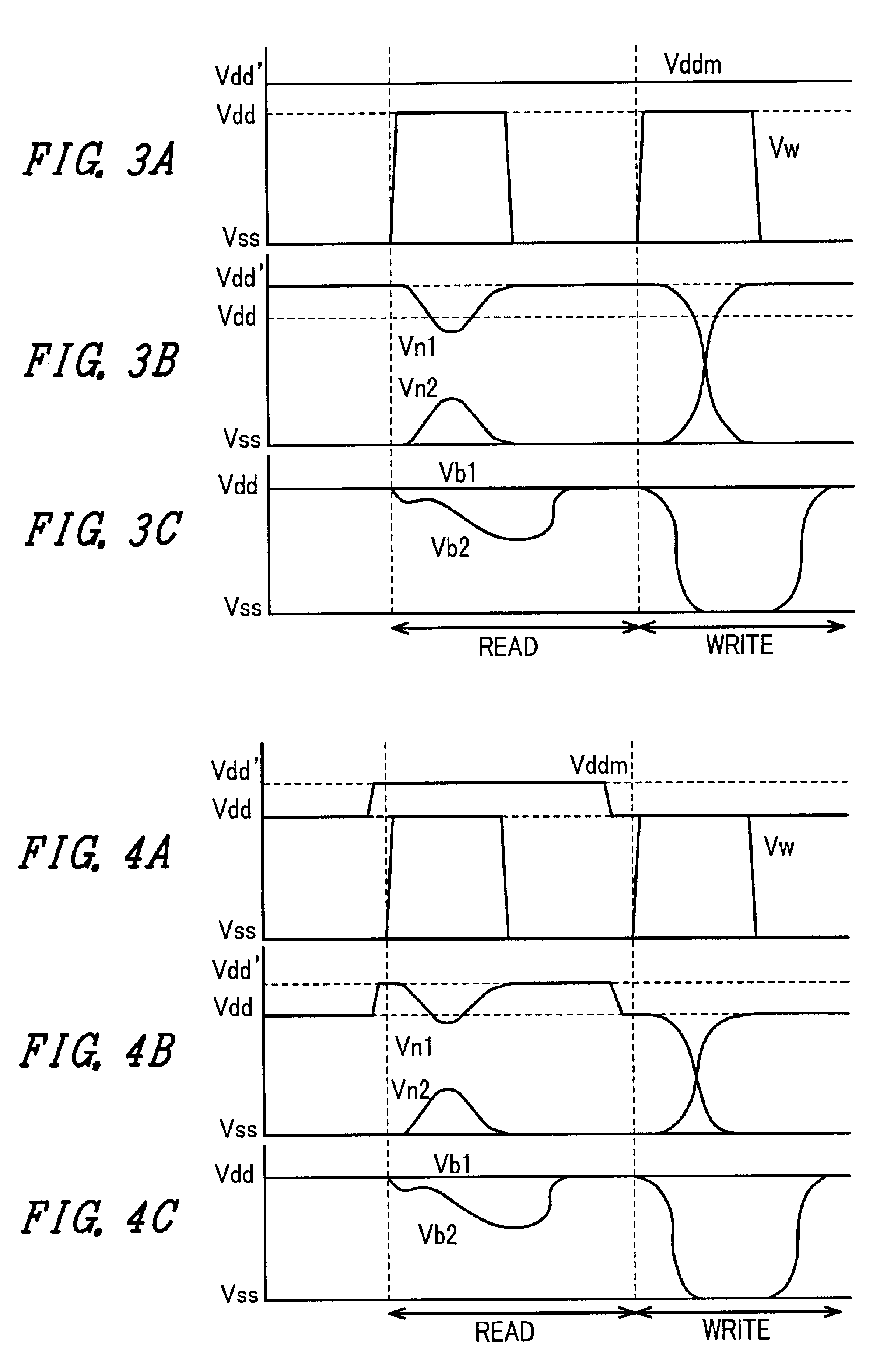Semiconductor memory device with memory cells operated by boosted voltage
a memory cell and semiconductor technology, applied in semiconductor devices, digital storage, instruments, etc., can solve the problems of inability to read, consume extra electric power required for charge and discharge of power supply lines, and take a long time for the power supply voltage vddm of the memory cell array
- Summary
- Abstract
- Description
- Claims
- Application Information
AI Technical Summary
Benefits of technology
Problems solved by technology
Method used
Image
Examples
Embodiment Construction
FIGS. 18A and 18B are diagrams respectively showing the voltages to be applied to the SRAM memory cells during the active state and during the non-active state of the SRAM circuit. FIG. 18A shows the power supply voltage Vddm for memory cells and the voltage Vbp of the N-well power supply line. Whereas, FIG. 18B shows the ground voltage Vssm for memory cells and the voltage Vbn of the P-well power supply line 8.
In this power supply voltage application pattern example, during the active state, the voltage Vdd' higher than the power supply voltage Vdd for the peripheral circuits is applied as the power supply voltage Vddm for memory cells and the voltage Vbp of the N-well power supply line. During the non-active state, the voltage Vdd equal to the power supply voltage for the peripheral circuits is applied as both the voltages. As the ground voltage Vssm for memory cells and the voltage Vbn of the P-well power supply line, the constant ground voltage Vss is applied at all times irresp...
PUM
 Login to View More
Login to View More Abstract
Description
Claims
Application Information
 Login to View More
Login to View More - R&D
- Intellectual Property
- Life Sciences
- Materials
- Tech Scout
- Unparalleled Data Quality
- Higher Quality Content
- 60% Fewer Hallucinations
Browse by: Latest US Patents, China's latest patents, Technical Efficacy Thesaurus, Application Domain, Technology Topic, Popular Technical Reports.
© 2025 PatSnap. All rights reserved.Legal|Privacy policy|Modern Slavery Act Transparency Statement|Sitemap|About US| Contact US: help@patsnap.com



